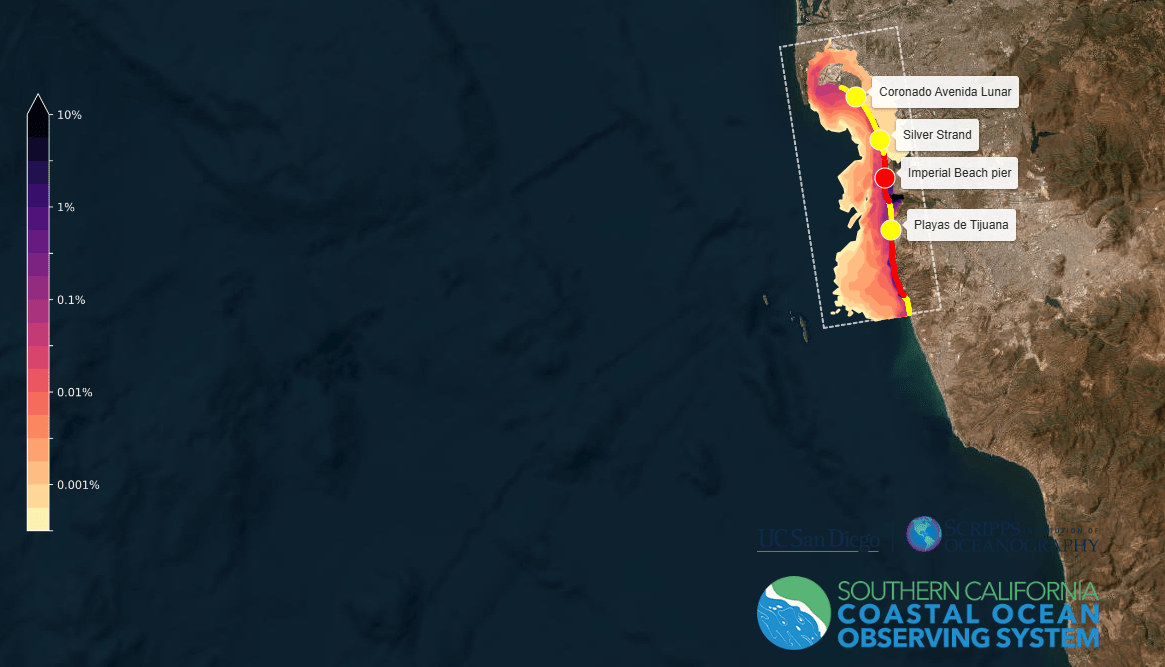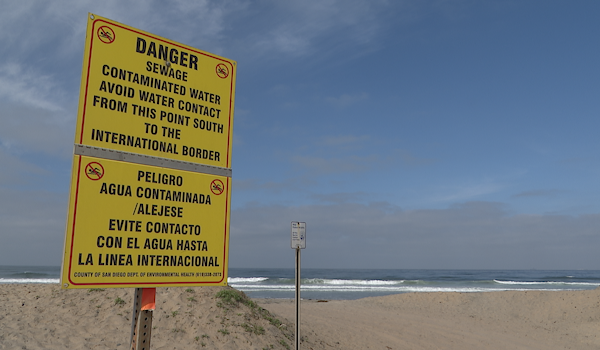SAN DIEGO (Border Report) — Researchers at the Scripps Institution of Oceanography, part of UC San Diego, have introduced a new tool designed to predict sewage pollution levels at beaches in southern San Diego County.
It’s called the Pathogen Forecast Modelpresented by the Southern California Coastal Ocean Observing System at Scripps
The Pathogen Forecast Model website offers detailed predictions regarding shoreline sewage levels and the probability of swimmers becoming ill at Playas Tijuana, Imperial Beach, Silver Strand State Park, and Coronado.
The goal, as stated by scientists, is to help families decide whether to bring their children to the beach.
The Pathogen Forecast Model demonstrates significant ability in predicting beach water quality readings from San Diego County, ranging from Imperial Beach to Coronado, up to five days in advance,” stated Scripps oceanographer Falk Feddersen. “Of course, similar to weather forecasts, the model has some inaccuracies. It remains in the experimental stage.
The model was created with financial support from the state of California.
As per Feddersen, the tool is the pioneering solution in the country that addresses a long-standing issue of untreated sewage from Mexico flowing into the coastal ocean on both sides of the border.

The website — pfmweb.ucsd.edu— features real-time visuals that use color coding for the water and shorelines.
I don’t think I’d enter the water when it’s in the red,” Feddersen stated. “The main objective is to obtain better information, standardized information.
Feddersen also mentions that the website and public information consider factors such as currents, tides, and wind, along with the county’s daily water test results.
Check the county’s website and you’ll see which beach is under advisory and which isn’t. What you can’t see is what will happen five days from now or what the weekend will be like.
For many years, wastewater discharge along the coastline has resulted in multiple beach shutdowns.
In the city of Imperial Beach, the southern beaches—those nearest to the border and the Tijuana River’s mouth, where millions of gallons of untreated sewage enter the ocean every day—have remained closed to the public for over 1,000 straight days.
Copyright 2025 Nexstar Media, Inc. All rights reserved. This content cannot be published, aired, altered, or shared again.







